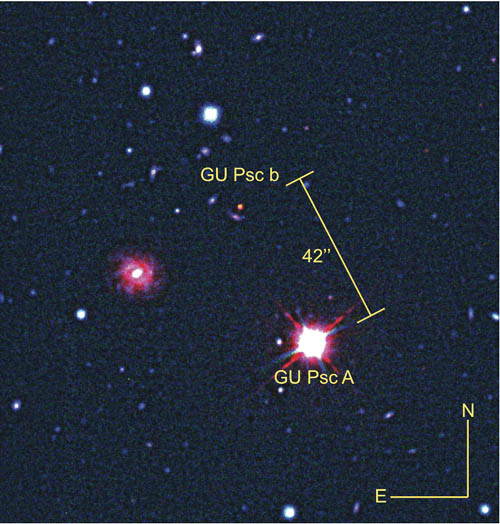News from the Canadian Gemini Office
by Stéphanie Côté, Canadian Gemini Office, NRC-Herzberg
First Cycle of Large Programs at Gemini
The Call for the very first round of Large and Long Programs at Gemini was announced for semester 2014B, with a deadline of March 31st. All in all 32 proposals were received from all partners. This included 4 Canadian PI proposals, with a total of 33 canadians participating
in about a dozen of proposals. The overall oversubscription for LPs was around 5.3, with Gemini-South more in demand than Gemini-North. Seven programs were approved by the LP TAC. And two of these seven programs are Canadian-led. Congratulations to Michael Balogh (U. of Waterloo) who will be observing "The GOGREEN Survey of dense galaxy environments at 1<z<1.5" and
Wes Fraser (NRC-Herzberg) for "COL-OSSOS: COlours for the Outer Solar System Object Survey". Because these 2 programs were amongst the 3 largest submitted in terms of requested time, together they amount to more than half of all the time awarded to LPs! An offical announcement about the LPs will be coming out soon on the Gemini website. The next deadline for LPs will be March 31st 2015.
 |
Figure 1: Cartoon on the importance of a colour survey for outer solar system objects that swayed the judges to award the team 378 hours of Gemini time. The colours will help to better understand the composition of the planetesimal disk, and will help to distinguish between the abrupt versus smooth Neptune migration scenario.
Credit: M.T.Bannister, W.Fraser, J.J.Kavelaars and R.Pike (NRC-Herzberg)
|
Recent Canadian Gemini Press Releases
• Last May, a team headed by Bruce Macintosh (Lawrence Livermore \& Stanford University) published some of the first light data with the Gemini Planet Imager, on the orbit of Beta Pictoris b. The team includes
Q. Konopacky, J. Maire, M. Millar-Blanchaer (Dunlap Institute), C.Marois, J. DUnn, D. Erikson, L. Saddlemyer (NRC-Herzberg), and R. Doyon (U. de Montréal).
GPI achieved contrast performance that is an order of magnitude better than conventional adaptive optics imagers. The planet
Beta Pictoris b is about 4 times the size of Jupiter, and is situated 63 light-yeears away from our Sun. The team was able
to determine that the planet orbit is not aligned with the main star Beta Pictoris main debris disk, but is aligned to and
possibly interacting with an inner warped disk. This might help us understand how the planet-forming disk in our own solar system might have evolved a long time ago.
• Also in May, a team
led by PhD student Marie-Ève Naud and including E. Artigau, L. Malo, L. Albert, R. Doyon, D. Lafrenière, J. Gagné and A. Boucher (U. de Montréal) discovered through direct imaging a gas giant planet at a record distance from its star. GU Psc b is about 2000 times the Earth-Sun distance away from the star GU Psc, a young M3 star likely member of the young AB DOradus Moving Group. It was first identified through its distinc red i - z color (>3.5) through a GMOS-S survey. Follow-up observations were acquired with CFHT/WIRCAM, Gemini/GNIRS, Keck and Mont-Mégantic.
The GNIRS spectra was fitted with atmosphere models to yield, using the age of AB Doradus, to a mass estimate for the planet of 9 to 13 Jupiter Mass.
 |
Figure 2: Composite image from Gemini/GMOS-S and CFHT/Wircam showing the planet GU Psc b and its star GU Psc.
Credit: Marie-Ève Naud, U.de Montreal
|
Gemini Data Reduction User Forum
A few months ago Gemini launched a new Data Reduction User Forum. It is intended to be a user-supported location to share ideas, scripts and data reduction tips, and to host user-driven discussions on data reduction strategies. Please consider contributing to this Forum if you have written a script, a cookbook or have useful tips that other Gemini users may find useful to reduce their data sets, at the Gemini Data Reduction User Forum. There are already many interesting posts such as GMOS IFU data reduction cookbooks and scripts, GNIRS XD and GMOS longslit scripts, GMOS Nod&Shuffle tutorial, or how to create a GSAOI bad pixel mask, amongst many other contributions.


